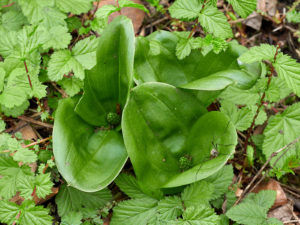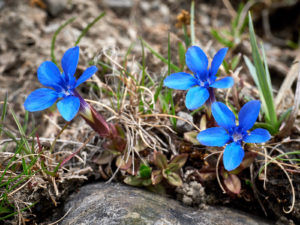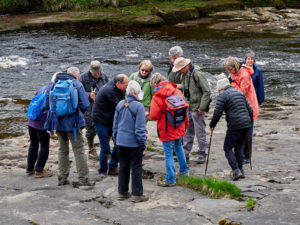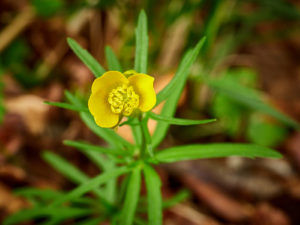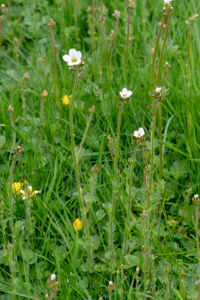Seventeen members met at the Bowlees visitor centre for a botanical field meeting to study the flora of the area. The visitor centre is located in an old Primitive Methodist Chapel. The walk was led by HDNS long time member Richard Campbell who knows the area very well.
We walked from the car park, behind the visitor centre along Bow Lee Beck to an old quarry. We found very many plants in a short space of time. Many were in their early stages of flowering as we were further north than Harrogate and at a higher altitude. A full plant list is attached to this Field Trip report. To pick out a few we saw Twayblade, just at the two leaf stage but it is very distinctive and we saw hundreds of plants over the day. We also saw Common Spotted Orchid, Arum Lily, Wood Anenome, Barren Strawberry, Wood Forget-me-not, Marsh Marigold, Butterwort, Opposite-leaved Golden Saxifrage and Welsh Poppy.
We returned to our cars and drove a couple of miles further west just the other side of the river from the Pennine Way. On the more acidic roadside verge we saw the distinctive silver leaves of Melancholy Thistle. We were to see very many more leaves of this abundant plant during the day. Greater Knapweed was growing nearby and also Water Avens. We followed a track across the field down to the River Tees. There was a cold wind blowing and young lambs in the fields. We saw Heath Wood-rush, Birdseye Primrose, Common Scurveygrass, Spring Gentian, Creeping Willow, Cowslip, Sweet Vernal-grass, Marsh Valerian, Early Purple Orchid and many more. There were Sand Martins by the river. We drove back to the Visitor Centre for lunch.
After lunch we walked from the car park. We crossed the road and walked by a wood. We found Great Wood-rush, Winter Aconite, Bluebell, Wood Sorrel, Common Whitlowgrass. Thyme-leaved Speedwell, Slender Speedwell, Globe Flower and Bitter Vetch, Lathyrus montanus. We crossed the river at a very interesting geological feature where the river washed down over rocks and small waterfalls to reveal a polished limestone platform revealing many fossils. David Holmes was able to explain the Geology and also about a large intrusion in the river, the size of a house, we came across later which had been washed down by the molten Whin Sill 320 million years ago. We walked back along the river bank in the direction of the Wynch Bridge and Low Force where the plant life was verdant. We saw good numbers of plants we had already seen and one new one for the end of a great day – Goldilocks.
On the way home some of us stopped off at Eggleston Abbey where we were treated to the sight of thousands of plants of Meadow Saxifrage.
Many thanks to Richard Campbell for a really wonderful Field Trip.
Valerie Holmes

